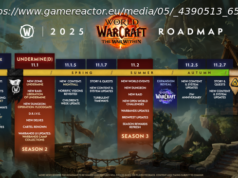Microsoft has become an increasingly enterprise-focused company, but part of the reason for this may be that it is mainly consumers who are moving away from Microsoft operating systems and services. Companies, always Microsoft’s strong point in terms of revenue and support, are still very much married to Microsoft and Windows, such that the retirement…
Microsoft has become an increasingly enterprise-focused company, but part of the reason for this may be that it is mainly consumers who are moving away from Microsoft operating systems and services. Companies, always Microsoft’s strong point in terms of revenue and support, are still very much married to Microsoft and Windows, such that the retirement of Windows 7 has caused companies in large numbers to start the process of migrating to Windows 10, which in most cases meant buying new PCs.
Gartner reports that this replacement cycle drove a 1.4% increase in PC sales in Q2 2018, with a total of 62.1 million PCs sold. This is the first quarter of year-over-year global PC shipment growth since the first quarter of 2012.
“PC shipment growth in the second quarter of 2018 was driven by demand in the business market, which was offset by declining shipments in the consumer segment,” said Mikako Kitagawa, principal analyst at Gartner. “In the consumer space, the fundamental market structure, due to changes on PC user behavior, still remains, and continues to impact market growth. Consumers are using their smartphones for even more daily tasks, such as checking social media, calendaring, banking and shopping, which is reducing the need for a consumer PC.
Windows 7 support is officially ending in 2020, and Gartner expects the PC replacement cycle will end soon after however.
“In the business segment, PC momentum will weaken in two years when the replacement peak for Windows 10 passes. PC vendors should look for ways to maintain growth in the business market as the Windows 10 upgrade cycle tails off.”
All of the top five PC vendors experienced an increase in worldwide PC shipments in the quarter. The numbers exclude iPads and Chromebooks but include Surface PCs.
The individual company results add some complexity, and despite growth in education sales in USA, there is still a lot of pressure from Chromebooks in the area, which grew 8% in USA.
Given the continuing strong support for the PC in enterprise, was Microsoft right in swinging more towards this segment and away from consumer devices and services? Let us know below.






